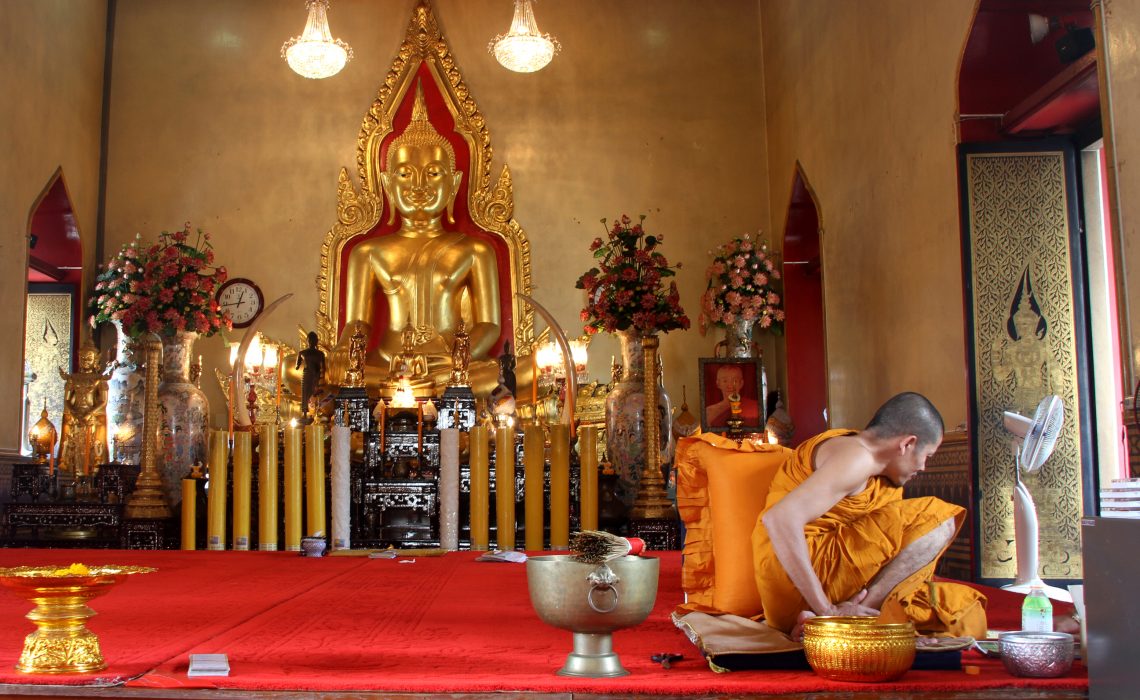
You might also like:
ASIA is awash with Buddhist monasteries, temples, nunneries and other sacred places, and chances are you will find yourself at one or more of them during your travels.
Remove shoes and hats
You will probably find a pile of shoes outside a temple or monastery that will help remind you to remove your shoes. If you wear slip-on shoes this makes this a much easier process, as undoing laces can be tiring and time consuming. Similarly hats should be removed.
Wear modest clothing
It can be hot in southeast Asia and and you may therefore have headed out for the day in shorts or singlets, or just come from the beach, however modesty is appreciated in all Buddhist areas, even if it is not enforced. If you have a scarf with you this can be a good way to cover your shoulders and it is best if you have long pants or long skirts below the knee to cover your legs.
Be weary about photography
In tourist places there is usually some leniency shown to camera touting foreigners who may wish to photograph ceremonies, worship, participants and just about anything else. However it is best to avoid taking photographs during ceremonial events and to ask people first before snapping.
A monk in a Buddhist temple in Wat Traimit, Bangkok
Don’t point or lean
Travel can be tiring, however it is disrespectful to sit on or near any Buddhist statues, or even to touch them. Children should also be kept from climbing on Buddhist statues. It is considered rude to point at things or people in or around a temple, particularly with your feet; these should always be tucked underneath you if you are sitting.
If you do need to indicate something do this with an open right hand with the fingers extended and palm up, avoiding the use of the index finger. If you walk around a temple complex always navigate it in a clockwise direction, and if you enter a shrine always do so with your left foot first and exit with your right.
Behavior
General behavior within or around a temple should be quiet and respectful. People may be meditating or praying even if you can’t see them and it is considered a reverential area so laughing, loud talking or displays of affection should be avoided.
This is particularly important if you have children with you who may benefit from a quick talk beforehand to explain the basics of the visit.

Monks receving food offerings at a monastery. Pic: Amaravati
Interacting with monks
Monks enjoy meeting tourists and will be happy to interact with you should you visit their monastery or temple. If monks or nuns come into a room it is nice to stand to show them respect.
If they are already sitting in a room that you enter, it is best to sit down with them before conversing, and if they are prostrating, avoid walking in front of them or doing something to distract their worship.
When you greet a monk it’s best to put your hands in a prayer like gesture and bow slightly as a sign of respect. In countries like Myanmar, monks may be given a raised platform to sit on, or apportioned a special area in a bus or train.
This is intended for their use only, although they may allow or invite you to sit there. It is best however, not to touch a monk, or even their robes, unless they pass you something; if this should happen always use your right hand to make the exchange.
Donations
There are always boxes in temples and monsteries for visitors to put an offering. While this is not essential it is welcome. Clean flowers, fruit or food are also acceptable.
The post Etiquette to take note of when visiting a monastery appeared first on Travel Wire Asia.
Source: travelwireasia.com



